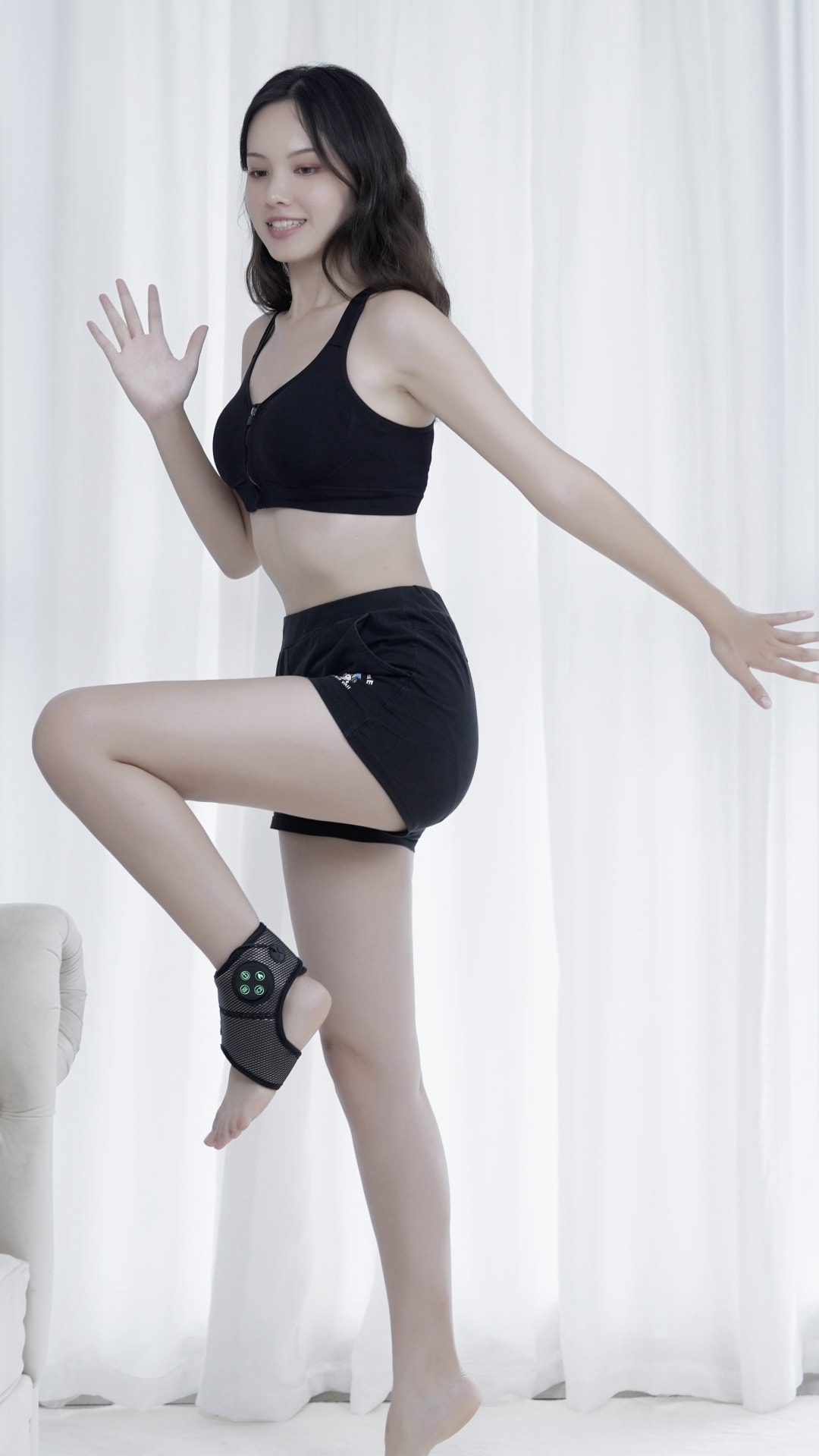Tingling After Foot Massager? A User's Guide for Seniors
- By Grace
- Updated on
You’ve just settled in after a long day, perhaps explored the vibrant streets of Singapore or even strolled along the familiar foot reflexology paths in our HDB parks in Bishan. Now, your feet are deep inside your favorite massager, humming away. Ah, bliss! But wait, as the session ends, you pull your feet out and… what’s that feeling? A distinct tingling, maybe even some numbness. Is this normal? Is something wrong? It’s a common question, especially for us as we get a bit older, and it’s completely understandable to feel a little puzzled. Let's unpack this mystery together.
What Happens Under the Hood of Your Massager?
When your feet go into a modern massager, a lot of sophisticated action begins! Many devices that conform to ergonomic design, such as the KLCOSY, aren't just for a superficial rub; they're designed with various functions like air pressure, heat, vibration, and even red light functions to target different aspects of foot wellness. The air pressure often gently squeezes your feet, mimicking a deep tissue massage, while the heat function helps relax muscles and improve circulation. Then there’s the vibration, which can feel quite intense, and the red light, aimed at soothing tissues.
Each of these functions stimulates the nerves and muscles in your feet in unique ways. Think about those reflexology points you find in the parks; a good machine aims to activate similar pressure points, which can send impulses throughout your nervous system. This stimulation is often what causes that tingling feeling – it’s just your blood flow normalizing and your nerves "waking up."
- Air Pressure: Gentle compression and release, enhancing circulation.
- Heat Therapy: Relaxes muscles, improves blood flow, and soothes discomfort.
- Vibration: Stimulates nerve endings and deep muscle tissue.
- Red Light: Believed to aid cellular repair and reduce inflammation.
Is It Too Much? Understanding Intensity and Technique
Sometimes, that tingling or numbness isn't just normal nerve stimulation; it can be a sign that your massage intensity might be a tad too much, too soon. I’ve often seen people, especially those who are fitness enthusiasts or dealing with persistent fatigue, jump straight to the highest setting, thinking "the stronger, the better!" To be honest, this isn't always the wisest approach. If a setting feels too "kiang" – too powerful, like it’s really digging in – without gradually building up, it could be overwhelming your nerves.
Improper technique, particularly with one of these devices, often involves excessive pressure or duration. When the machine's rollers or air compression are too intense, they can temporarily compress nerves or blood vessels. This leads to that feeling of numbness or heightened tingling as the pressure is released, similar to how your arm might feel tingly if you've leaned on it incorrectly. Always remember, starting on a lower intensity first and slowly increasing it is a really, really important step.
- Start Low: Always begin with the lowest intensity setting to allow your feet to adapt.
- Listen to Your Body: If it feels uncomfortable or painful, reduce the intensity immediately.
- Gradual Increase: Only increase intensity slowly over several sessions, not all at once.
- Duration Matters: Stick to recommended session times to avoid over-stimulation.
When Sensations Hint at Deeper Issues: Circulation & Neuropathy
While often benign, persistent tingling or numbness can occasionally be a gentle nudge from your body, suggesting something deeper might be going on. For middle-aged and elderly people in particular, these sensations could point to underlying medical reasons, such as circulation problems or even neuropathy. I believe it's always better to be safe than sorry when it comes to your health, right?
Conditions like poor blood circulation mean your feet might not be getting enough oxygen, and neuropathy, which is nerve damage, can make your nerves overly sensitive. In such cases, the massager might not be the cause, but rather, it could be highlighting an existing condition. For instance, if you're exploring a machine to help with blood flow or nerve health, it's crucial to understand these tools are complementary, not substitutes for a diagnosis.
If you experience persistent or worsening tingling, numbness, or pain, it's truly essential to get a professional opinion. A visit to a polyclinic in Bedok or your family doctor can provide clarity. They can assess your specific situation, check for issues like nerve compression, and advise whether a particular massager is suitable or if other treatments are needed.
Getting the Most Out of Your Foot Massager: Best Practices
To truly embrace the benefits of your device, integrating some best practices into your routine can make all the difference. Remember, the goal is relaxation and relief, not discomfort! Think of your massage sessions as a mindful break for your feet, a time for gentle care.
Hydration is key; drinking enough water supports overall circulation and muscle function. Also, consider the timing of your sessions – perhaps after a warm bath when your muscles are already relaxed. And don’t forget to give your feet a little stretch afterwards. It’s really about looking at the big picture for your foot care. If you're looking for a massager to help with neuropathy, prioritize those with gentle, adjustable settings.
- Stay Hydrated: Drink plenty of water before and after your massage session.
- Choose Wisely: Opt for a model with adjustable settings (air pressure, heat, vibration) to customize your experience.
- Warm-Up: A warm foot soak before using the massager can enhance relaxation.
- Post-Massage Stretch: Gently stretch your feet and ankles to improve flexibility.
- Consistency is Key: Regular, short sessions are often more beneficial than infrequent, intense ones.
When to Call Your Doctor: A Gentle Nudge
While most sensations after a massage session are harmless, it's incredibly important to know when to seek professional medical advice. Your health is paramount, and ignoring persistent symptoms could lead to more significant issues. We want to empower you to take charge of your wellness, and sometimes that means knowing when to reach out for expert help.
If you experience any of the following, please don’t hesitate to contact your doctor: persistent tingling that doesn't subside, worsening numbness, sharp or shooting pains, unexplained weakness in your foot, or changes in skin color. These could be signs of nerve compression, circulatory issues, or other medical conditions that require a proper diagnosis.
In conclusion, that tingling sensation can stem from several factors, from normal nerve stimulation to potentially indicating underlying health conditions. Most often, it's a benign sign of improved blood flow or nerve activity. However, paying attention to your body and adjusting your usage, starting with lower intensity settings, is key to a comfortable and beneficial experience.
Ultimately, a good foot massage should leave you feeling refreshed and rejuvenated. If you ever find yourself concerned, remember that seeking professional medical advice is the smartest step. Your well-being is worth it!
Frequently Asked Questions About Foot Massagers
Why do foot massages hurt?
Foot massages can sometimes hurt if the intensity is too high, if you have sensitive feet, or if there are underlying issues like tight muscles or knots. Starting with a low setting is crucial. Some discomfort can be normal during a deep tissue massage as it works on releasing tension.
Can a foot massage be harmful?
Generally, they are safe when used correctly. However, a massage can be harmful if the intensity is excessive, if used on injured areas, or if you have certain medical conditions like severe circulation problems or deep vein thrombosis. Always consult a doctor if you have pre-existing health concerns.
Does foot massage help neuropathy?
Foot massage can sometimes provide temporary relief for neuropathy symptoms by improving blood circulation and stimulating nerve endings, which might help reduce discomfort. However, it's not a cure, and individuals with this condition should always consult their doctor before using any new massage therapy to ensure it's safe for them.
This reply is generated based on currently verifiable public information. It is recommended to cross-check key content with authoritative sources.






